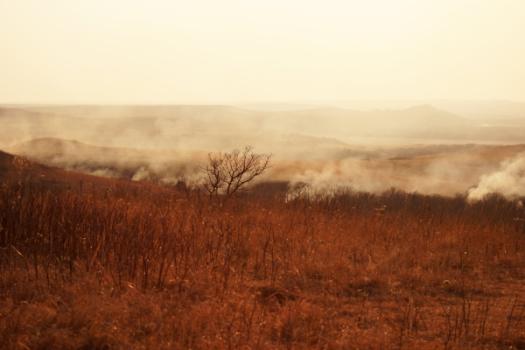
Wet weather in November helped grasses grow and thrive, but a dry winter has parched vegetation and raised the prospect for damaging blazes.
Fuel for Flames
A rainy autumn followed by a dry winter is raising wildfire risks for the US Great Plains and Texas.
Wet weather in November has helped grasses to grow and thrive across the Plains, but since then nature’s spigot has turned off, leaving dried-out plants that are potential fuel for blazes, said Brad Rippey, a meteorologist with the US Department of Agriculture.
All that’s needed is a spark and high winds, and a situation could develop similar to the devastating fires that killed 29 people and devastated neighborhoods across Southern California in January, he said.
The western half of Oklahoma and most of Texas are among the places at above-average risk of “significant” wildfires going into March, according to the National Interagency Fire Center. Roughly a year ago, Texas was scorched by its largest fire in history. The Smokehouse Creek blaze in the state’s Panhandle left two people dead and destroyed homes and livestock.
Reprinted courtesy of Brian K Sullivan, Bloomberg, Mary Hui, Bloomberg and Lauren Rosenthal, Bloomberg